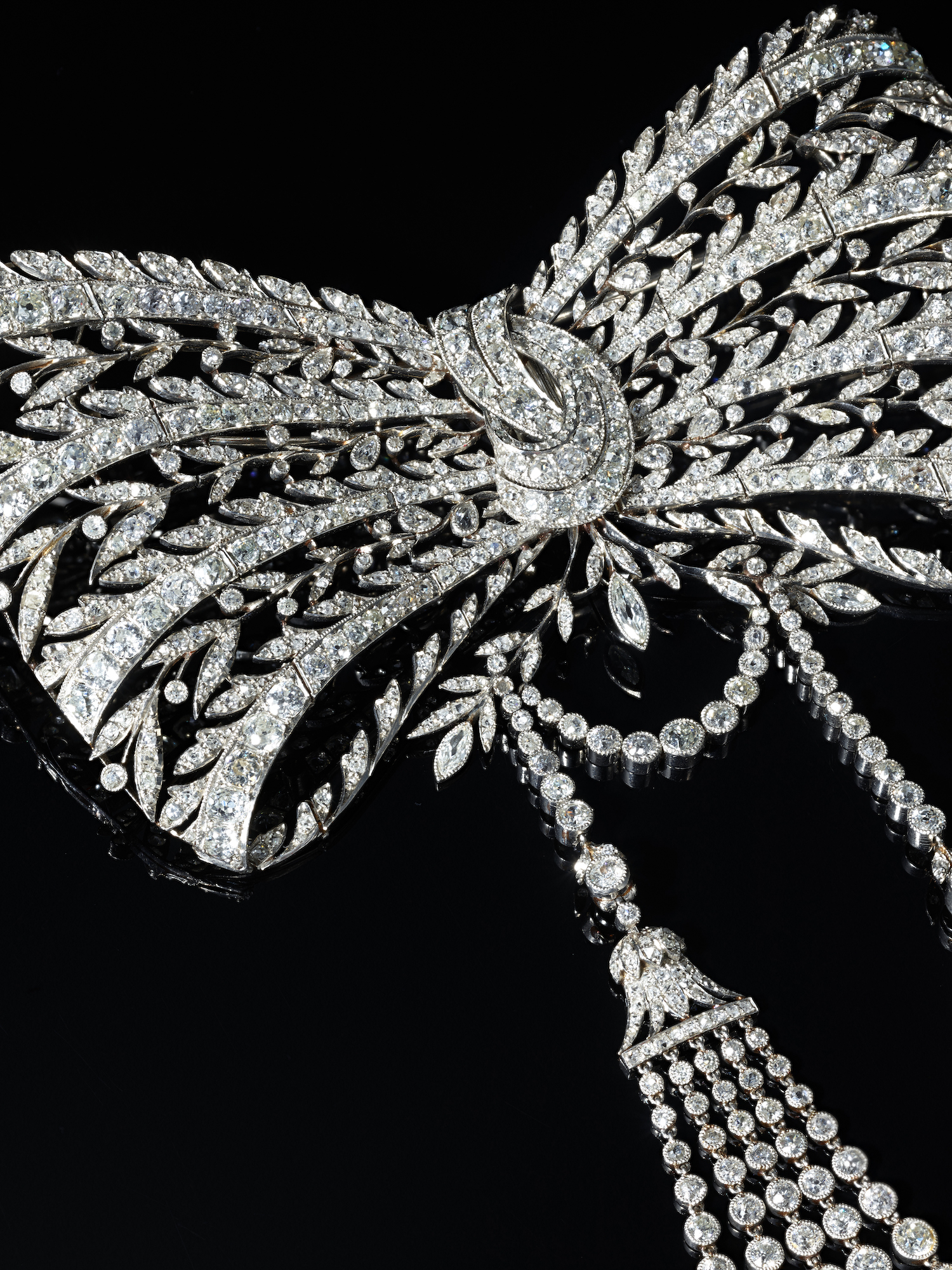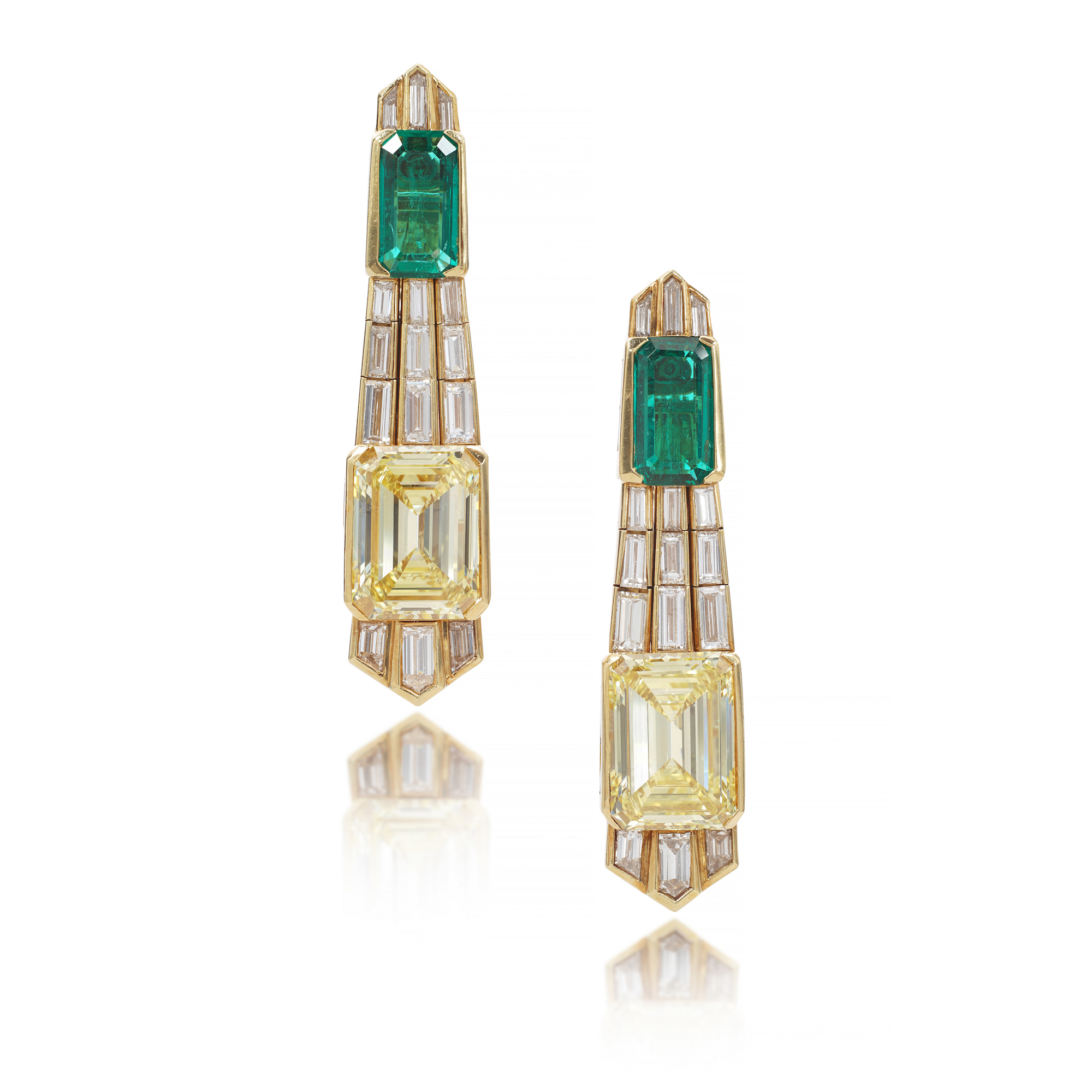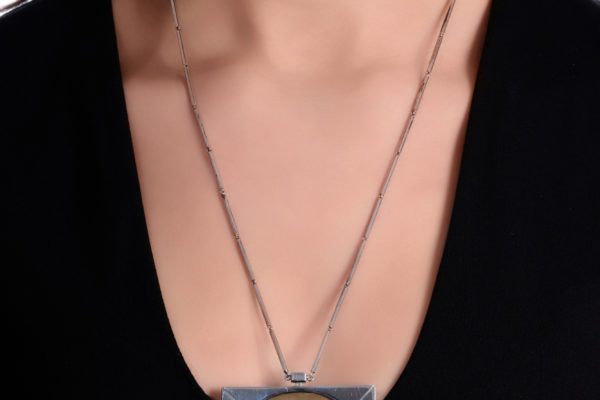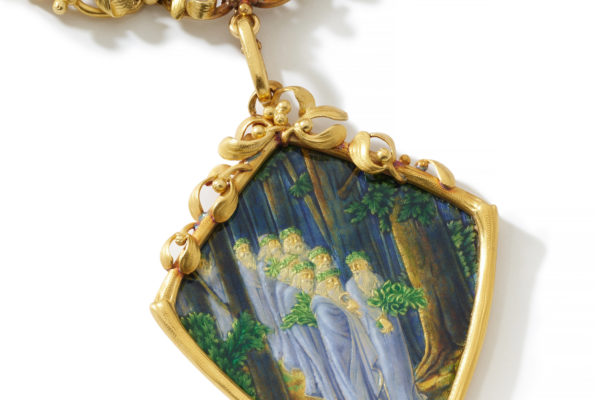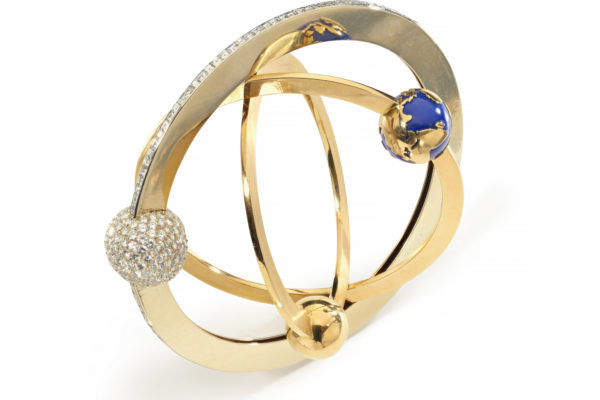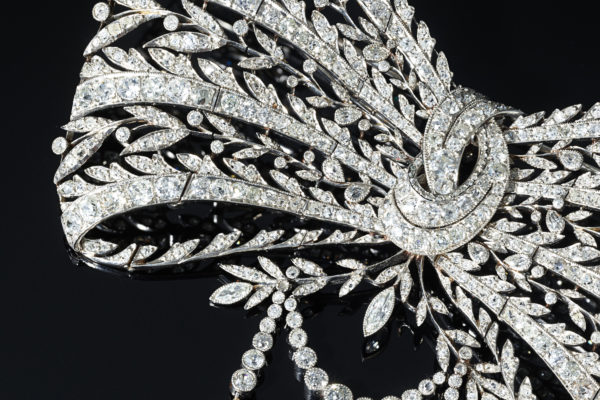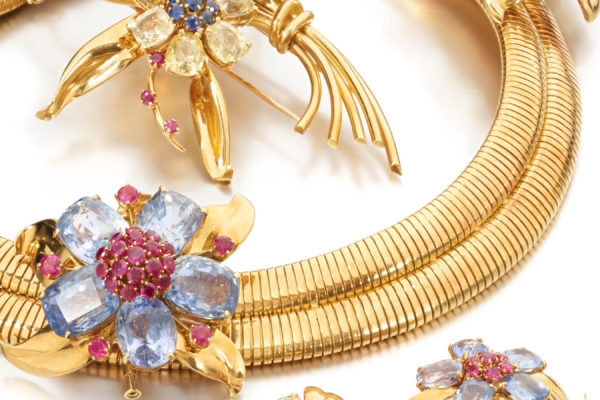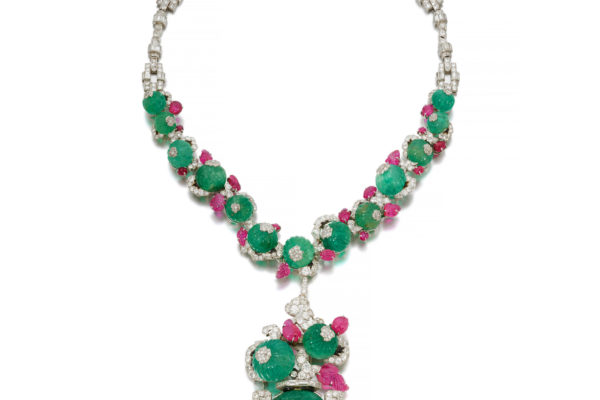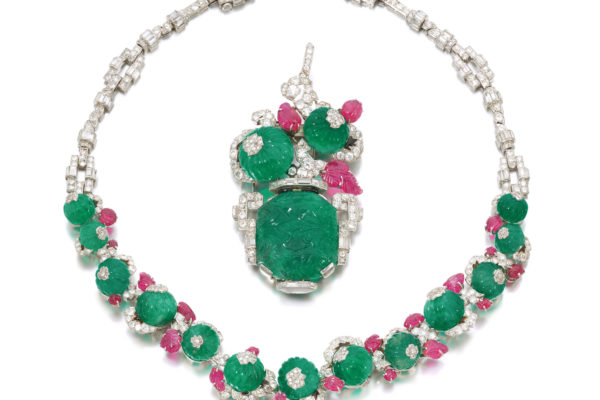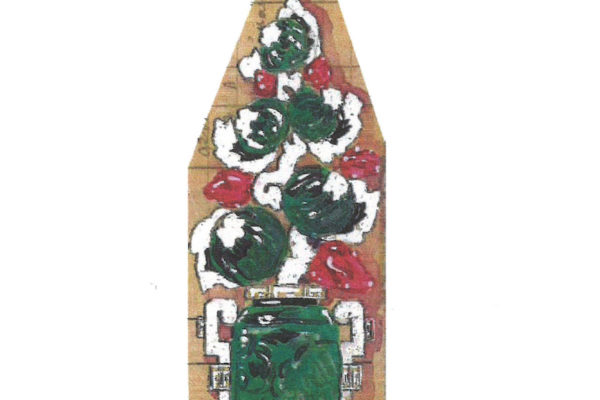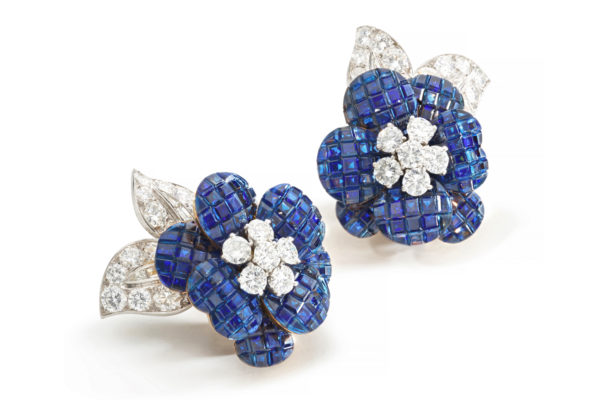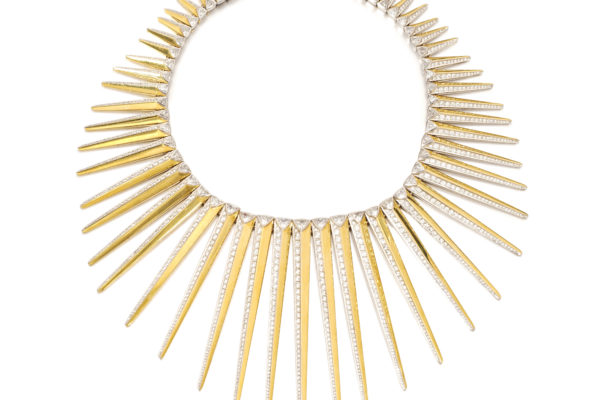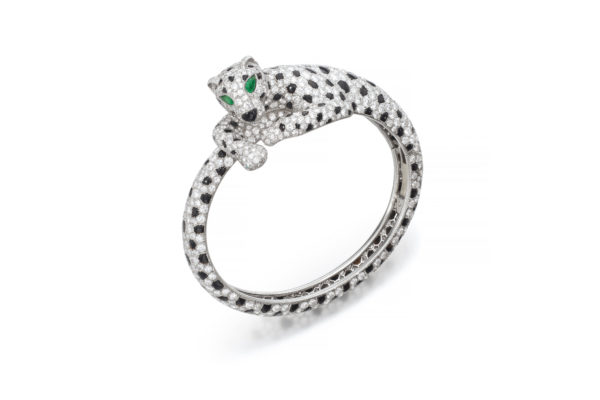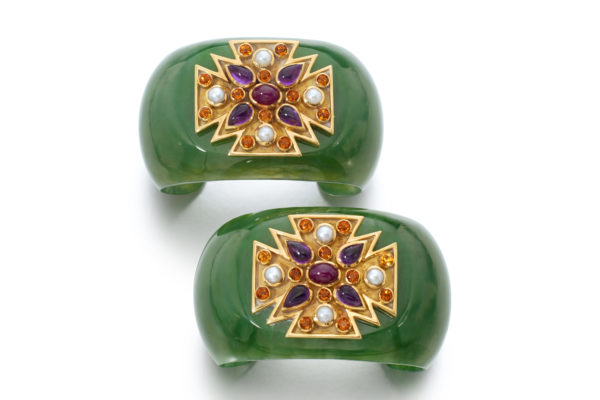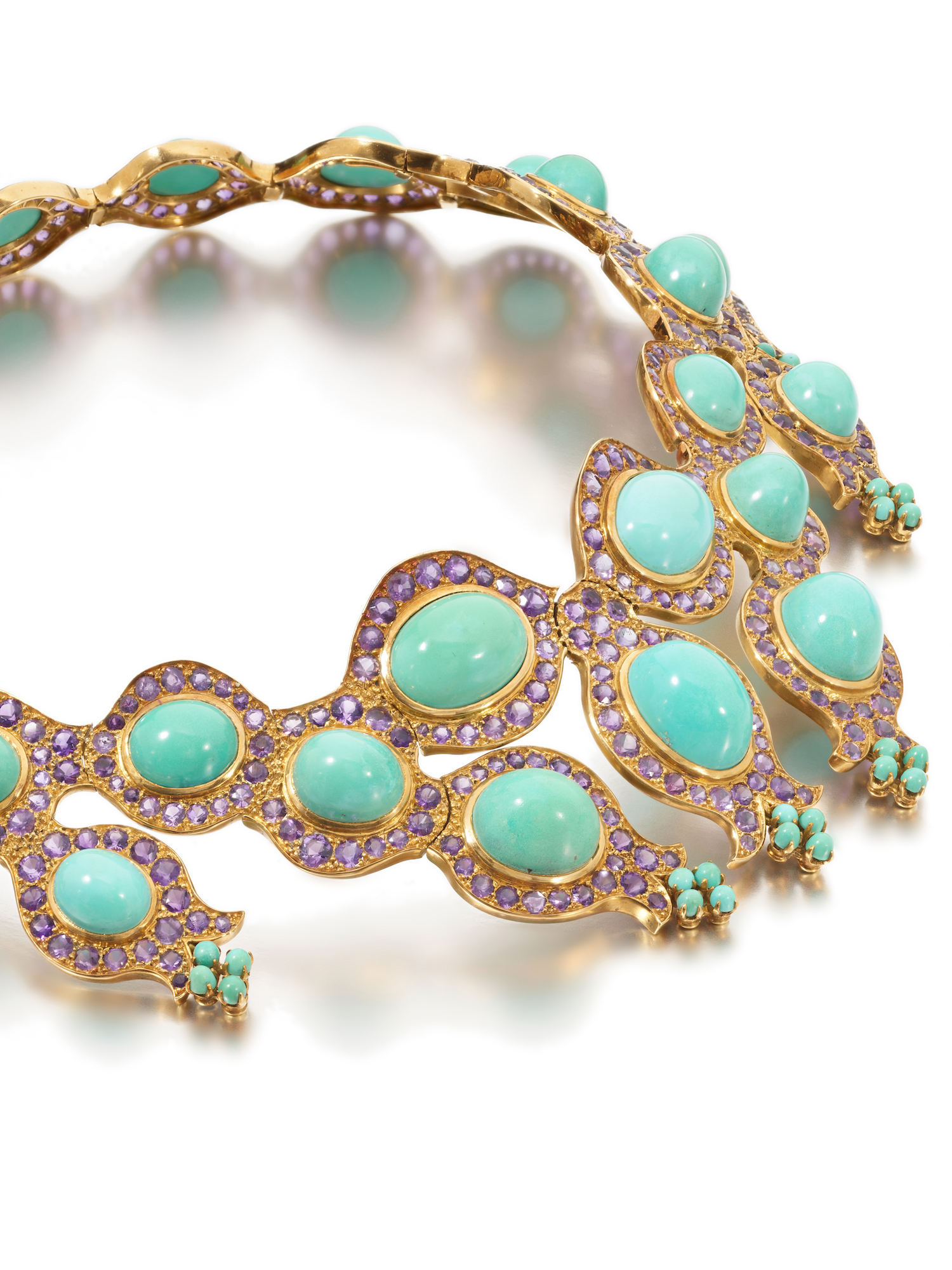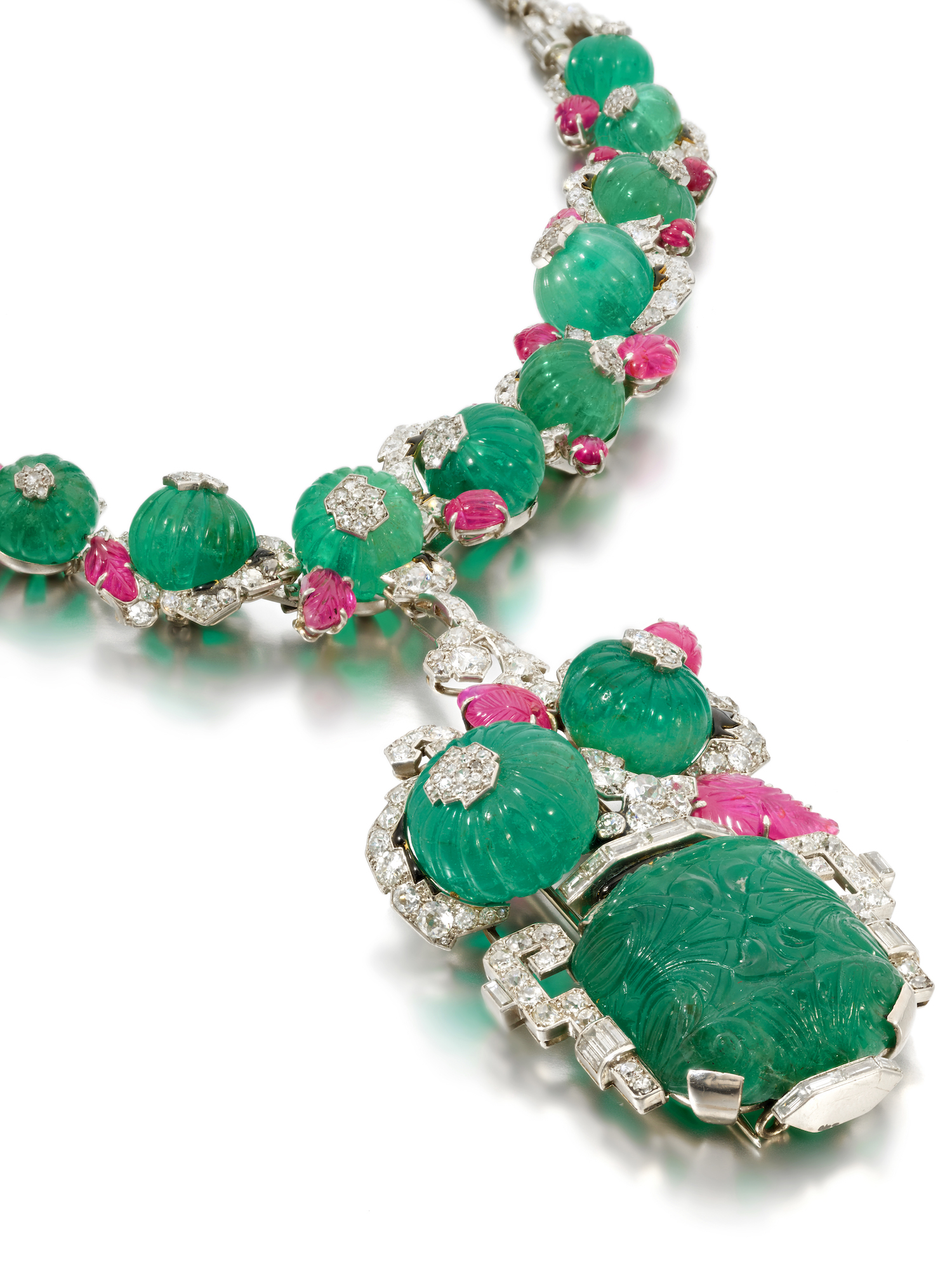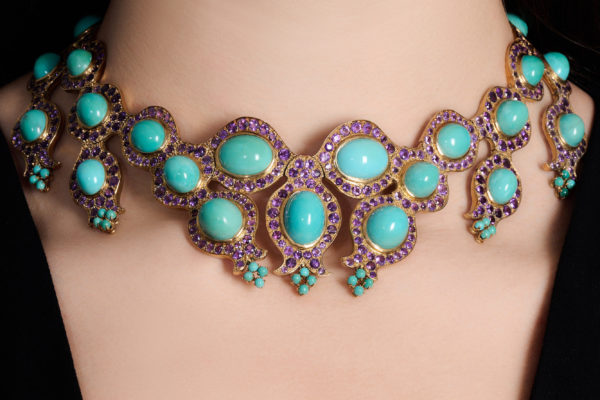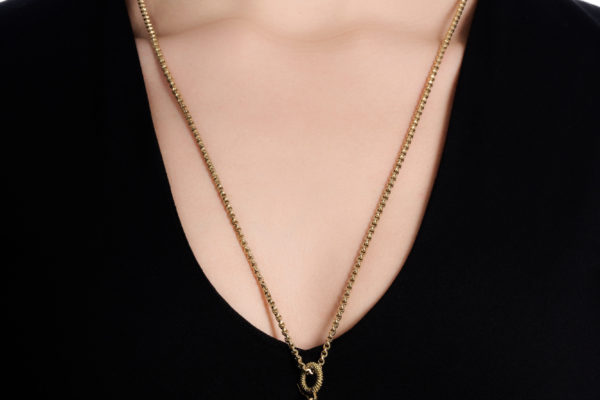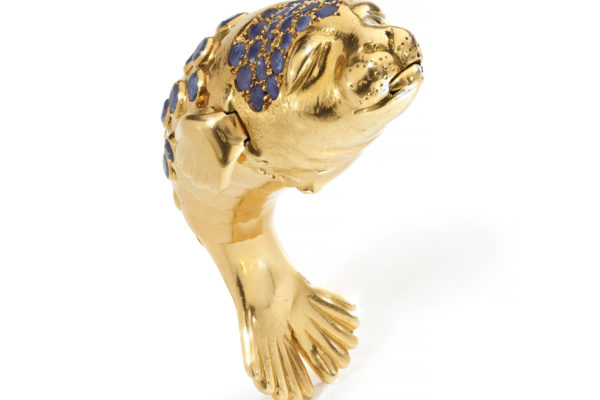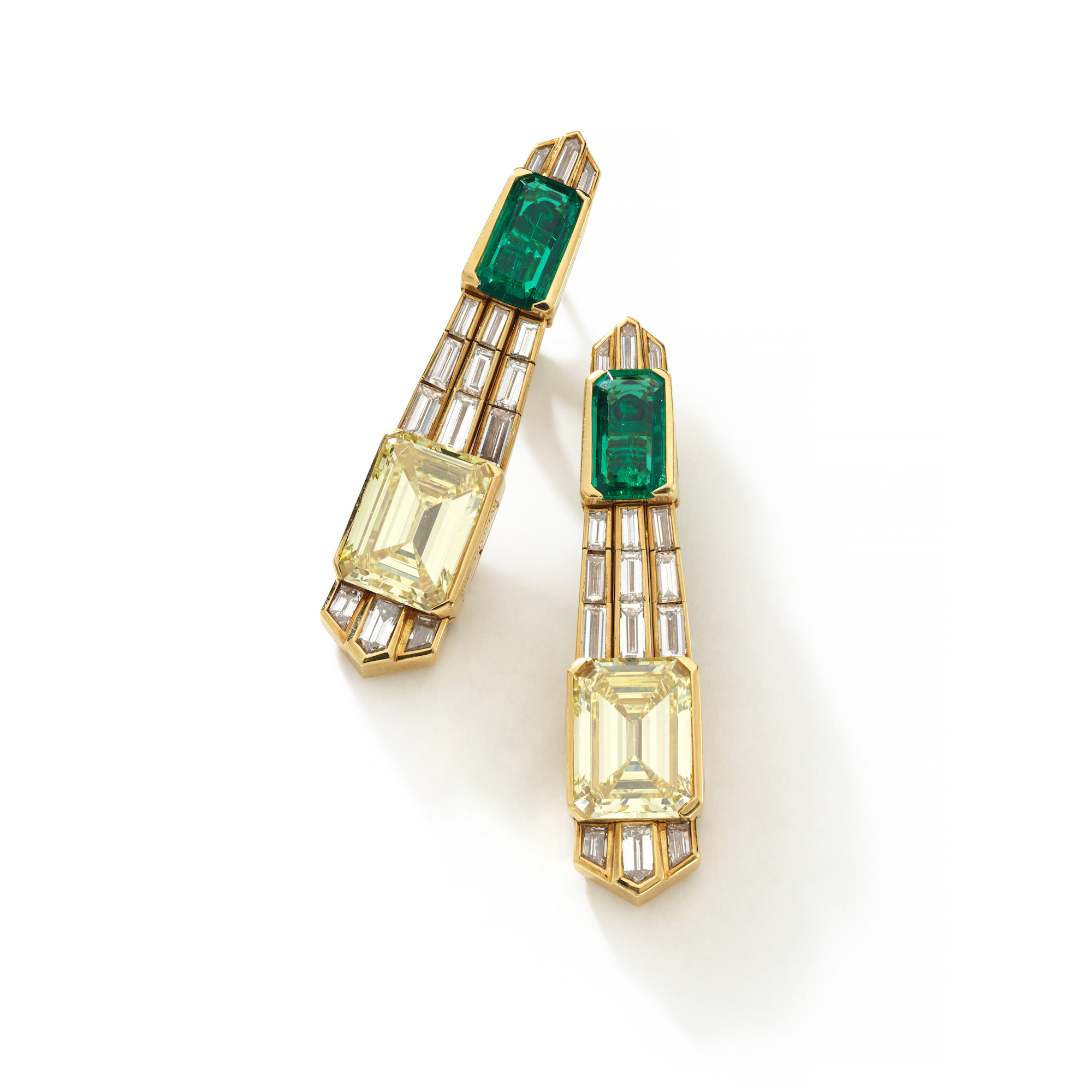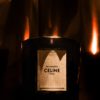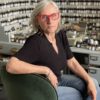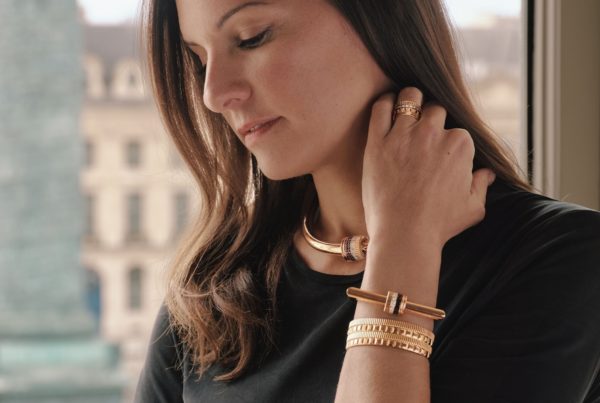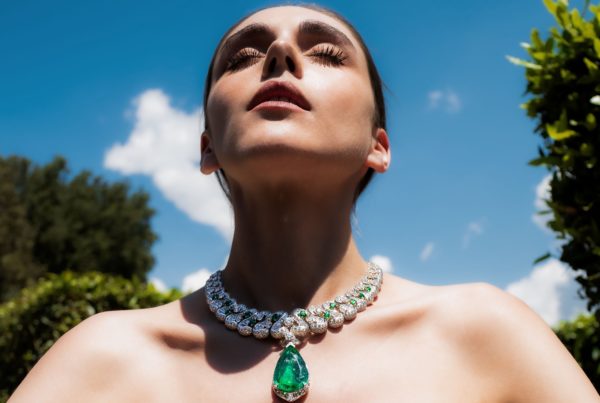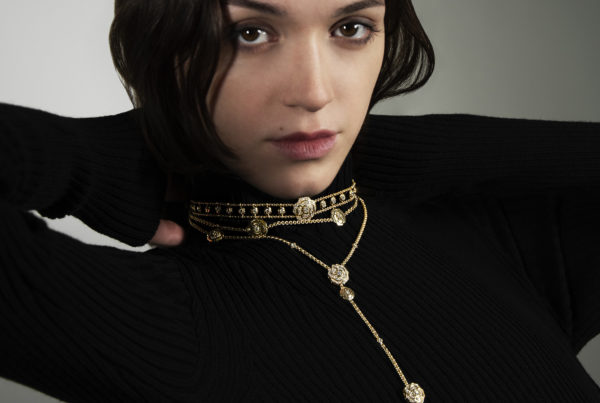Rare pieces by Boivin, Lucio Fontana, Arnaldo Pomodoro, Falize,…
More than 250 pieces of jewellery belonging to a collector were sold by the Geneva auction house for a total of CHF 11,531,092. A white-glove sale: all the pieces were sold over double the low estimate! This woman has the finest and largest collection of Boivin pieces in the world. Her treasures also include artists’ jewellery and a pair of Bulgari earrings that once belonged to the Baroness of Portanova. Interview with Isabelle Cerboneschi.
“Over a year ago, a woman called the reception desk and said she’d like to sell some jewellery. This kind of thing happens every day, but getting in touch with someone you don’t know who has a collection of this size and quality, which has never been auctioned, is a once-in-a-lifetime experience! And I’ve been in the business since 2010,” explains Marie-Cécile Cisamolo, director and jewellery specialist at Sotheby’s, with passion.
Anyone with a passion for jewellery will be in raptures when they see the pieces on display. « In my 14-year career, I’ve never seen such a well-constructed collection,” says Cisamolo. « It includes some splendid pieces of jewellery from the 1970s, and almost all the pieces are signed Van Cleef & Arpels, Cartier, Bulgari, and so on. She has acquired some fantastic jewellery by artists from the 50s and 60s, like this cuff by Lucio Fontana, a necklace by Arnaldo Pomodoro, an Art Nouveau pendant by Georges Fouquet or a necklace by Falize. The best of the best”.
Each piece in this collection has been chosen, loved and above all worn. « This is a collection for women,” says Marie-Cécile Cisamolo. « Many of the great jewellery collections are men’s collections, created to bring together the most beautiful ruby, the most beautiful sapphire, the most beautiful diamond, the most beautiful Cartier necklace… An intellectual approach. The jewels in this collection were chosen not only for their quality but also for their comfort. This woman wore her jewellery every day: it was part of her life. This is a collection full of emotion and charm”.
Among the multitude of dreamy pieces, there is a very large number of Boivin jewels: this woman has the most beautiful, the largest collection of Boivin jewellery in the world. But this has never been her driving force. In fact, she never had any intention of creating a real collection. With just a few days to go before the sale, she agreed to talk to us anonymously about her treasures.
INTERVIEW
What inspired you to start buying jewellery?
I never wanted to build up a collection. For me, a collection is created obsessively around a single theme, an accumulation of Ming vases, for example. I bought jewellery to be worn. That doesn’t mean I didn’t follow a common thread. That thread is what I liked, what I like today and what has evolved over time.
Do you remember the first piece of jewellery you bought?
It was an Art Deco platinum ring, an unsigned piece with an aquamarine and stepped diamonds. A ring that I no longer have, by the way.
Did you realise at any point that you were creating a collection?
No, not really. The first person to mention this word in connection with my jewellery was Françoise Cailles (an expert in antique and modern jewellery), the day she talked to me about my Boivin jewellery collection.
Why did you decide to part with over 250 pieces?
Because I have a daughter who kept what interested her and because I’ve worn my jewellery all my life, every day, but I’m wearing a lot less. Keeping them in a safe would leave me with a feeling of uselessness. As if they didn’t belong to me any more.
Is there a common link between all your jewellery?
Yes. I haven’t always bought signed jewellery, but I’ve been guided by the look and quality of the pieces. I’m also attracted to jewellery that defies trends. Of course, they also had to fit me! I’ve missed out on some pieces, either because the price wasn’t right for me or because they didn’t look right on me. I have no regrets.
Where did you buy your jewellery: at auction, from jewellers, from dealers?
J’en ai acquis I bought very little at auction and I would ask someone to represent me. The only pieces I bought directly from a jeweller were the Marina B jewels that my husband offered me. I tended to buy from dealers. You have to realise that they have their own collections, pieces that they are particularly fond of and that they don’t necessarily put on display. I sometimes used to do some bartering: when a dealer agreed to open his safe, it was because he was interested in one of the pieces in my own safe.
You own the finest collection of René Boivin jewellery in the world. How did you become attracted to this jeweller?
I was never looking for Boivin: it just happened over time. What attracted me was the difference. Boivin jewellery is like no other. The “Algues” necklace, for example, is a dressy piece: you don’t need complicated clothes to wear it. In contrast, the earrings that belonged to the Empress of Vietnam could have been designed by another, more traditional jeweller, but I couldn’t resist their provenance.
How did you acquire the fantastic Bulgari earrings that belonged to the Baroness of Portanova?
It’s quite a story. You will have noticed that there are very few diamonds and hardly any solitaires in my collection. But one day, after a property transaction, I decided to buy myself a diamond. I spoke to a friend, who is also my colleague, and for three months she sent me numerous certificates by fax. I finally decided to see two diamonds: one cushion-shaped and the other emerald-cut. After seeing them, I told my friend that I wasn’t cut out for ice cubes (laughs). Wearing them would have been like saying: “Look, I’ve got a 20-carat diamond on my finger”. But that’s not me. I decided to give up the search. A fortnight later, this friend contacted me again and asked if I’d be interested in a pair of fancy yellow diamonds. I went to the diamond dealer, saw the two stones and liked them. I thought I’d make earrings out of them. But the diamond dealer had dismantled a pair of earrings that had been removed from an auction to sell the two diamonds. I discovered that the earring mount still existed, that it was still set with the two emeralds, and I asked the dealer to put the two diamonds back on the mount.
Do you have a special story to tell about this pair of earrings?
One day, I found myself at 6am in an airport with two small children, in the Easy Jet waiting room. I came early because I had a lot of luggage. That day, I was wearing these earrings, hidden under my hair. Suddenly, a very nice Lebanese lady looked at me rather amused and said: “My dear, is it your habit to wear things like that at 6 o’clock in the morning? We laughed. It could have been fake, it could have been Burma, but she had understood that this jewellery was not something you should wear to go shopping…
There are a lot of brooches in your sale. Why did brooches appeal to you?
Quite simply because I used them! It was an element that allowed me to drape a garment. A pretty brooch sometimes doubled as a necklace, so I didn’t have to wear a chain around my neck, which I hate because it makes me feel strangled.
How do you let go of pieces that have witnessed happy moments for decades?
There’s been an evolution between the time I decided to sell them and now. I don’t feel the same way any more. It’s brought back whole swathes of my life spent with these jewels. I have a photographic memory and I remember everything. A friend of mine asked me the day before yesterday: “If you make bingo with this sale, are you ready to do it again? » I said yes.
Sotheby’s sale, Iconic Jewels, Her sense of Style, exhibition until 16 May 2024 at the Mandarin Oriental, Quai Turrettini 1, Geneva.

